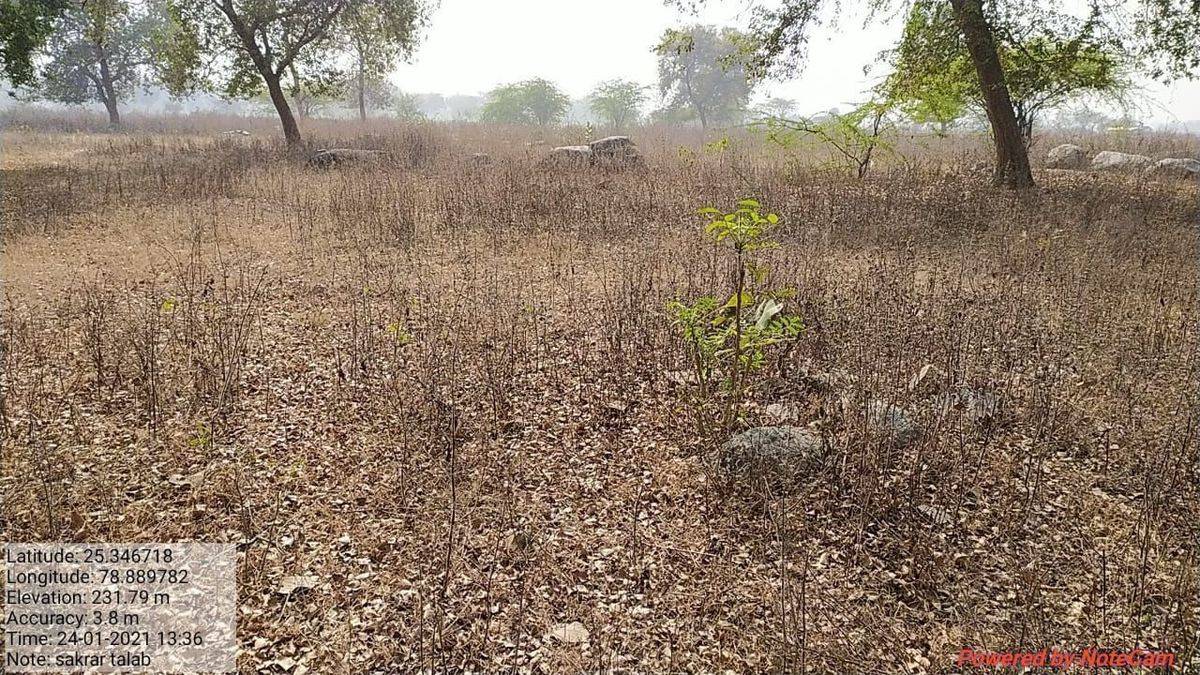
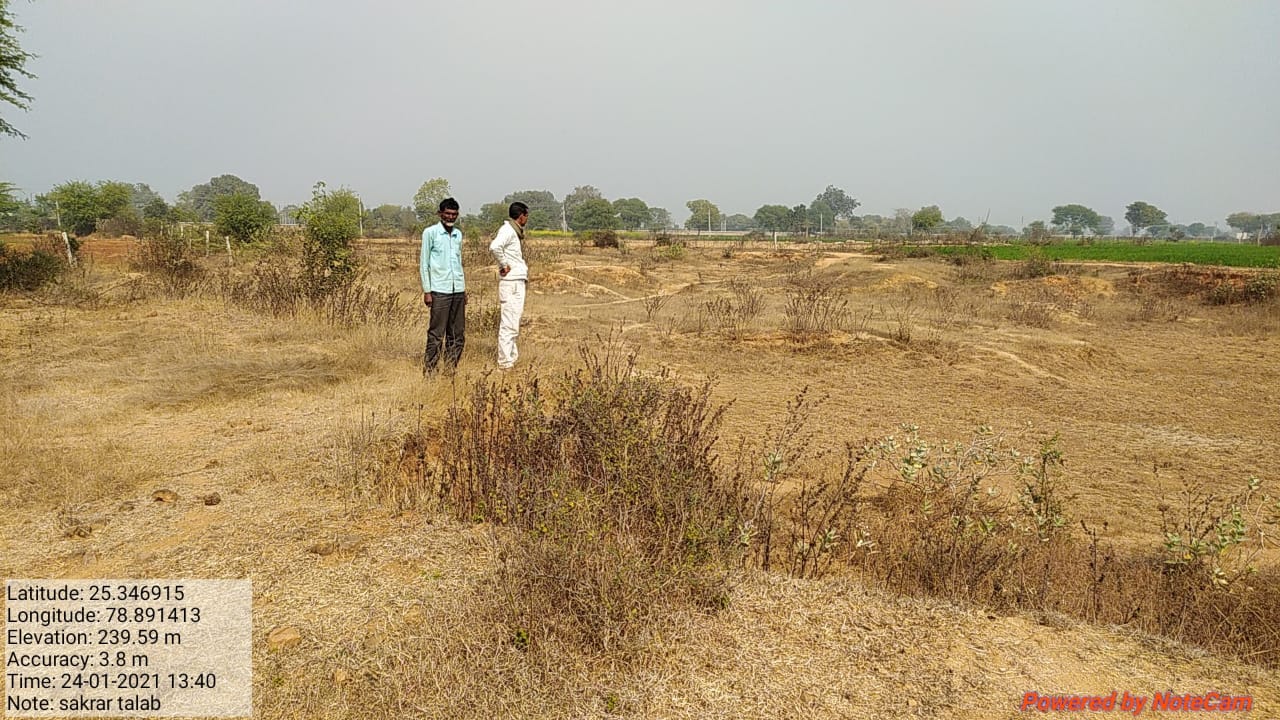
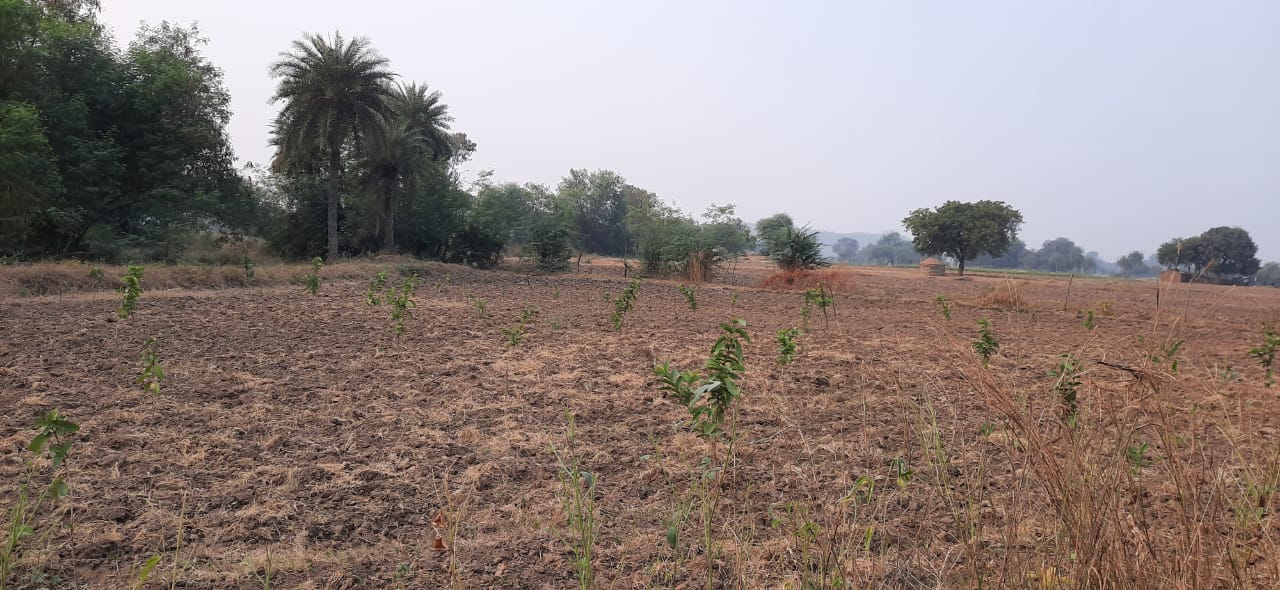


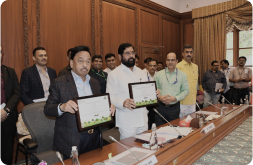
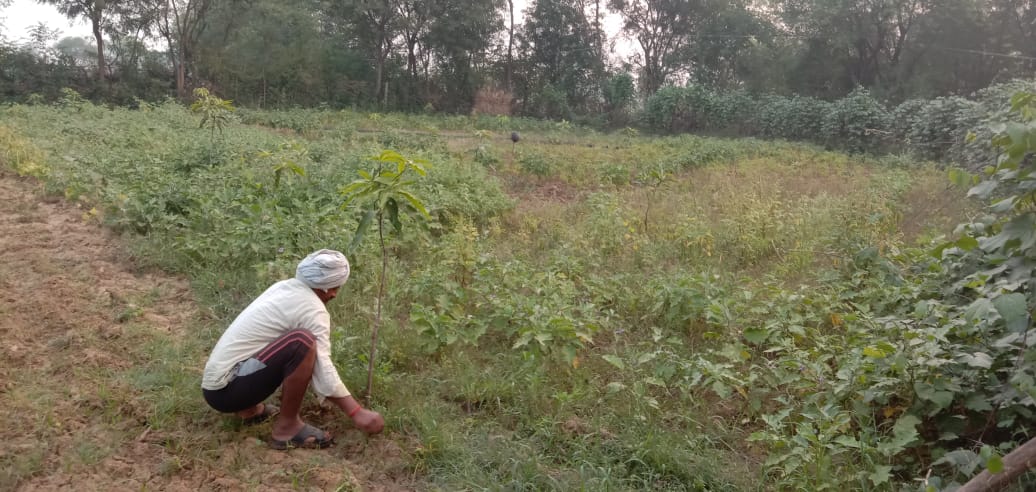
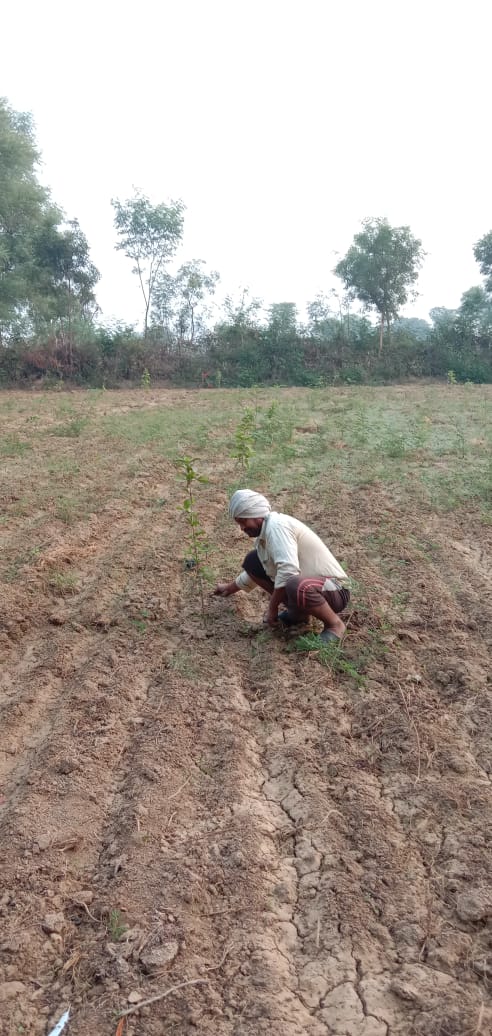


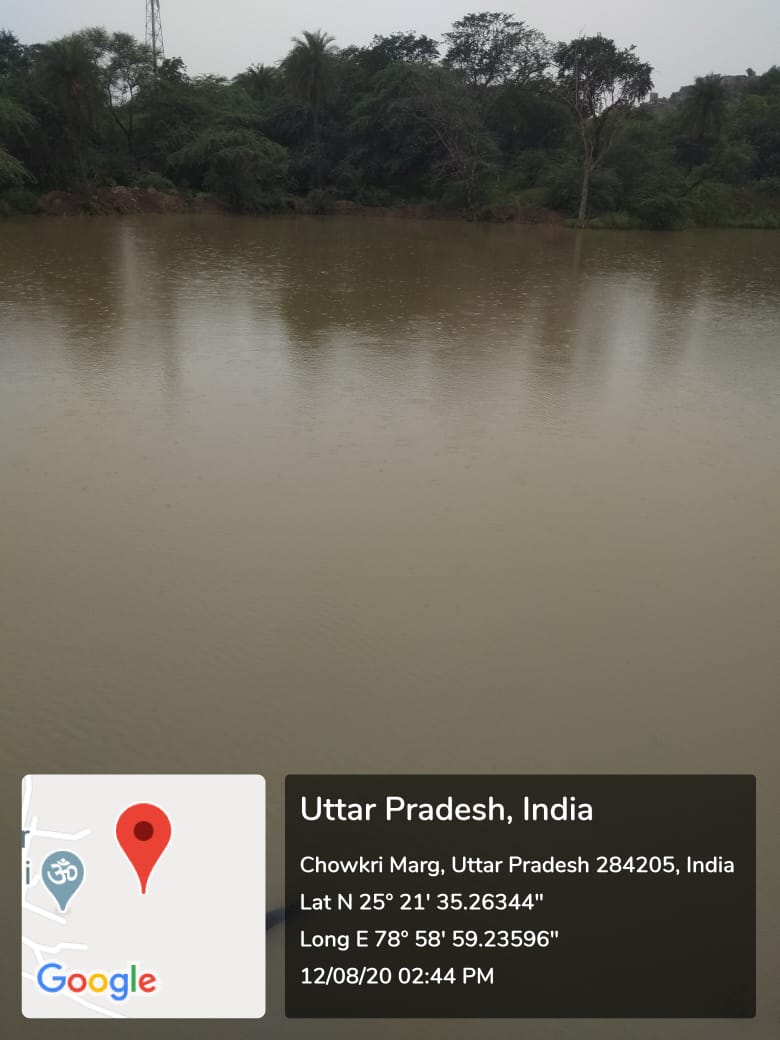
Project Target
0% Remaining
50,000
Trees Planted out of 50,000 Trees

Project Location:
Community lands in the villages of Santpura and Magarwara in Mauranipur Tehnsil and village Budhawali in Moth Tehsil of Jhansi District in Uttar Pradesh, India
Project Aim
The project involves enlarging an existing pond in Budhawali Village (2011 population: 1,598 people in 262 households) behind the local school and about 100 metres from the nearest point in our planting site, from a capacity of about 700,000 liters to a capacity of 2,000,000 liters. De-siltation provided an estimated 1,600 trollies of rich topsoil which were distributed to the local farmers to help them increase their output in the short term.
It rains for about 44.3 days in a year in the Jhansi region, mainly in the monsoon months, June to September, with August being the rainiest month and a total average of 891.3 mm (35.1 inches). Currently, surface water in rivers and shallow ponds dries up by the end of winter, creating water scarcity for villagers for the post-winter months till the next monsoon, typically about 4 months. During this period, villagers, their livestock and wildlife face great hardship from lack of easy access to water. The pond, which is based on surface runoff of water, will be enlarged to a length of 82 meters, width of 80 meters and depth of 1.50 meter; going deeper beyond the silt layer would reduce longevity of the pond through greater percolation. After the enlargement, the water pond should be able to suffice the needs of the villagers throughout the year. In the longer run, the pond will be co-managed by the village Panchayat and the Watershed Development Community.
Other expected outcomes from enlargement of the pond include:
The identified project location in Bundelkhand region is situated among the Indo-Gangetic plains on the Vindhyan hilly tracts in Central India. The region suffers from several limitations, mainly high vulnerability of natural calamities and poor infrastructural development, which has made agricultural productivity very low and livelihood uncertain. The region is characterized as drought-prone and resource-poor from an agricultural point of view. According to the 'Challenges of Natural and Human Hazards' published by Shodhganga, "Drought induced disaster is a serious issue in Bundelkhand region. The occurrence of drought in vulnerable and fragile ecosystem is more alarming as compared to plain areas." Another article in 'Down to Earth' stated that "Drought in Bundelkhand region of central India has been a matter of concern for decades. A new study by National Institute of Disaster Management (NIDM)...shows that droughts are not a result of just climatic conditions, but also man-made." The article also mentions a statement by Anil K Gupta, associate professor at NIDM and principal investigator of the study, "The usual pattern is that first the meteorological drought—rainfall much below average—happens. It leads to agricultural drought in the same year because India depends on monsoons for agricultural production. If the meteorological drought continues for the second consecutive year, then the hydrological drought—below average water availability—occurs," The cycle needs to be broken.
The region demands immediate action in order to enhance and then maintain the living standards of the villagers. These trees along with the enlargement of pond will help to support the basic needs of the villagers and gradually heal the natural resources as well. "Trees have been an integral part of humans’ lifestyle and livelihood security for centuries in India. Along with the several environmental advantages from trees like improved groundwater level, checking top-soil erosion, and improving wildlife habitats, trees will create diverse employment opportunities to the locals in the drought-prone Bundelkhand region with harvesting, collection and processing of the forest products. Rural communities of Bundelkhand region shows high level of dependency on local forest produces for sustaining their livelihood" (Trees for Life, S B Chavan et. al.). The multi-faceted benefits and services generated from tree-based systems are recognized as a tool to improve the socio-environmental status of these forest- dependent inhabitants.
Chironji (Buchanania lanzan), Amla (Phyllanthus emblica), Neem (Azadirachta indica), Guava (Psidium guajava), Mango (Mangifera indica), Drumstick (Moringa oleifera), Bamboo (Bambusa vulgaris), Karonda (Carissa carandas), Lemon (Citrus limon), Ber (Ziziphus mauritiana), Kino (Pterocarpus marsupium), Palash (Butea monosperma), and Peepal (Ficus religiosa).
The plantation of the right local tree species can be an effective way to address the socio-environmental challenge by reclaiming wasteland and converting degraded lands into forests. Locals' dependency on the dwindling forest resources can be reduced with improved produce from the trees and fodder for livestock. Enhanced forest area will help to rehabilitate key wildlife habitat, thus opening prospects for Wildlife tourism. Improved wildlife habitat with fruit and fodder species will have significance in addressing Human-wildlife conflict mostly in terms of livestock depredation, contributing to safeguarding the sensitive rural economy. Above all, the plantation of 50,000 local trees will help in improving the water table, check top-soil erosion, increase carbon sequestration, and generate local employment with household-level participation in implementing and monitoring of the project and in improving the ecosystem services. These trees, along with the pond enlargement, will further help in enhancing the soil nutrients, making it better for agricultural purposes. The water from the pond will be able to reach more people and assist them in irrigation. Cumulatively, the project will enhance sustainable employment avenues for the rural communities, uplifting them socially and economically.
Social Impact of Growing Trees
Community Engagement
Tree planting initiatives often involve local communities, which can lead to greater community cohesion.
Ecological Education
Provides opportunities for community members, especially children, about the importance of environmental sustainability.
Urban Beautification
Trees contribute to the aesthetic enhancement of urban areas, making cities more pleasant and liveable.
Climate Resilience
By improving green cover, tree planting helps make communities more resilient against climate impacts like heatwaves.
Employment Creation
Planting trees creates employment for local community members like planting and maintenance, administrative roles, and more long-term jobs in management.
Wildlife Habitat
Trees provide critical habitats for various species of wildlife. Enhancing tree cover helps preserve biodiversity, which can be an ecological boon for local communities
Copyrights @ 2025 All rights reserved by Pangea EcoNetAssets Pvt Ltd.